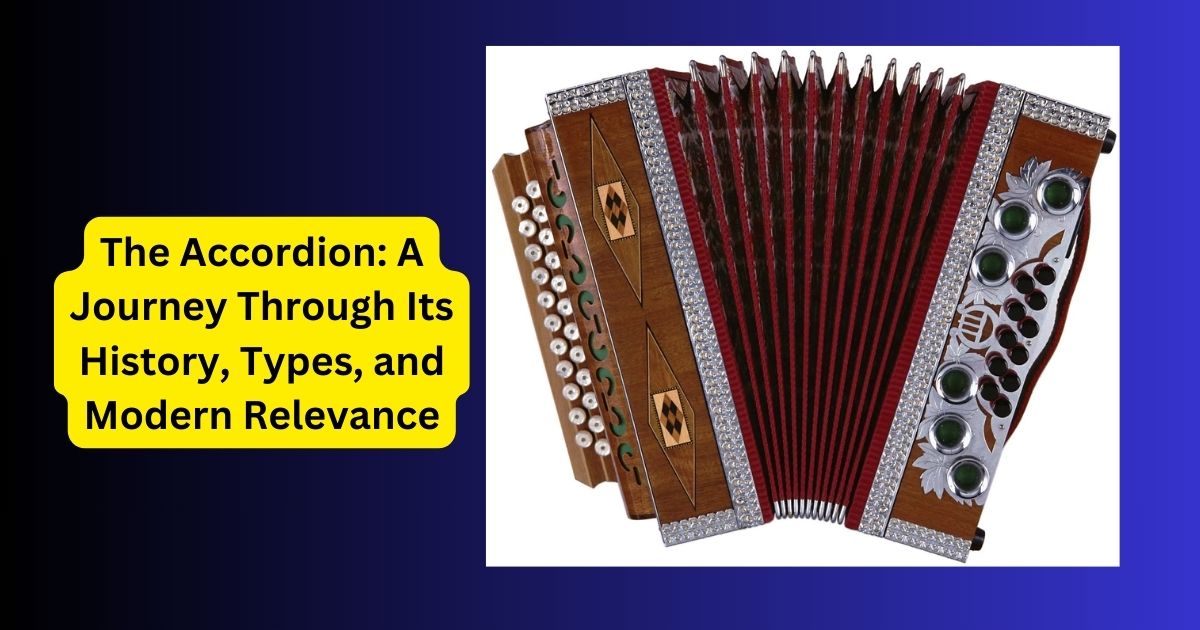The accordion, often affectionately called the “squeeze box,” is a versatile and fascinating instrument with a rich history. From its origins in Europe to its presence in contemporary music, the accordion has made a significant impact on a variety of musical genres. This blog will explore the history, types, and modern relevance of the accordion, shedding light on why this instrument remains beloved by musicians and audiences worldwide.
A Brief History of the Accordion
Origins and Early Development
The accordion’s story begins in the early 19th century. The invention of the accordion is commonly attributed to Friedrich Buschmann of Berlin in 1822, although similar instruments were being developed around the same time by other inventors in Europe. The instrument quickly gained popularity due to its portability and the rich, full sound it could produce.
Spread Across Europe
By the mid-19th century, the accordion had spread across Europe, finding a place in the folk music traditions of various countries. In Italy, for example, the accordion became a staple of traditional music, while in France, it became synonymous with the lively dance music of the bal-musette.
Global Expansion
The accordion made its way to other continents through European immigrants. In South America, it became integral to genres like tango in Argentina and forró in Brazil. In North America, it became a key instrument in Cajun and zydeco music, particularly in Louisiana.
Types of Accordions
Piano Accordion
The piano accordion, the most widely recognized type, features a keyboard on the right-hand side and bass buttons on the left-hand side. It is versatile and used in various music styles, from classical to contemporary.
Button Accordion
The button accordion, or chromatic button accordion, uses buttons instead of a keyboard. It is popular in Eastern European and Russian folk music, offering a range of notes that can be played in quick succession.
Diatonic Accordion
The diatonic accordion, often referred to as a “melodeon,” has a different tuning system and is typically used in folk music. Each button produces different notes depending on whether the bellows are being pushed or pulled, making it ideal for lively, rhythmic music.
Concertina
While technically a separate instrument, the concertina is a close relative of the accordion. It is smaller and has buttons on both sides, producing a unique, sweet sound that is popular in traditional Irish and English music.
The Accordion in Modern Music
Revival and Innovation
In recent decades, the accordion has seen a revival in various music genres. Indie bands, folk artists, and even rock musicians have embraced the accordion for its distinctive sound and expressive capabilities. Musicians like Yann Tiersen, known for his soundtrack to “Amélie,” and bands like Arcade Fire have brought the accordion into the mainstream.
Accordion in World Music
The accordion continues to be a vital part of world music traditions. In Mexican norteño music, the accordion is central to the genre’s sound. Similarly, it remains a key instrument in the polka traditions of Central Europe and the Norteño music of Northern Mexico.
Educational and Therapeutic Uses
The accordion is also gaining recognition for its educational and therapeutic benefits. Learning to play the accordion can enhance coordination, concentration, and musicality. In therapeutic settings, the accordion’s engaging nature and rich sound can aid in cognitive and emotional therapy.
Conclusion
The accordion is more than just a musical instrument; it is a symbol of cultural heritage and musical diversity. Its ability to adapt and evolve has kept it relevant throughout the centuries, and its unique sound continues to captivate new generations of musicians and listeners. Whether you are drawn to its traditional roots or its modern applications, the accordion’s charm and versatility make it a truly timeless instrument.
